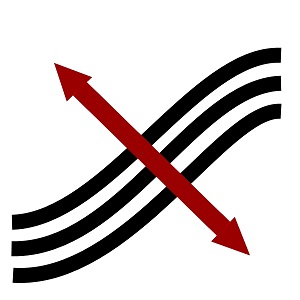Like-Blog
Presenting you the most interesting translation solutions

Why Like-Blog? Now, first of all, this blog is a blog that you should like (and read regularly) – at least, if you are interested in translation. Then, the topic discussed here is one in which the meaningful likeness between a text and its translation in the language pair English-German plays a key role. On this page, I will take a close look at some interesting translation solutions that I have come across in the course of my work as a translator and translation scholar.
A translation solution is only as good as the arguments that support it. This means that any translation criticism, whether positive or negative, needs to be justified. The quality of a translation solution shows only when we compare it to other possible translation solutions in a given translation situation. Therefore, a translation critic should not only say why a translation solution is bad, but also demonstrate what a better solution might look like. I will try to stick to these principles of translation criticism. So if you have any questions regarding my line of argument or if you disagree, please, let me know your opinion by phone at +49 4171 6086525 or by e-mail to bittner@businessenglish-hamburg.de. So much for the introduction. I hope you’ll enjoy reading this blog!
Cultural differences (June 2020)
Cultures are different. Everyday objects in one culture can be a far cry from the same kind of objects in another culture. This difference is relevant to translation.
In her “Letter from Uganda”, published in The Guardian on 15 October 2006, Monica Ali writes about Ugandan refugee camps. One topic is health education. A programme manager from Oxfam shows her some laminated cards: “She directs me to a table stacked with laminated, hand-drawn cards depicting latrines, latrine covers, brushes and hand-washing facilities.”
The translation of this sentence is quite inconspicuous: “Sie führt mich zu einem Tisch, auf dem sich beschichtete, handgemalte Karten stapeln, die Toiletten, Toilettendeckel, Bürsten und Handwaschbecken zeigen.” That the cards are laminated rather than coated is mentioned here only in passing. More interesting is the rendering of “latrines” as “Toiletten” (that is, toilets) and “hand-washing facilities” as “Handwaschbecken” (washbasins).
The translator argues that “Toiletten” is the more common term. That “Latrinen” is not particularly common is, of course, due to the fact that, in 21st-century Europe, the number of toilets is warranted to be significantly higher than the number of latrines. The translator’s argument, though, is irrelevant. After all, the purpose of the translation is not to present the reader with the most common equivalent of a privy in European culture, but to show him or her what a privy is like in a Ugandan refugee camp. And this is not a water closet. It is not for nothing that the English text uses the term “latrines”. With regard to the translation of “hand-washing facilities”, the situation is similar. An Internet research for “hand-washing facilities” and “Uganda” produces pictures of people who wash their hands under a jerrycan – certainly not pictures of a washbasin. The following translation is, therefore, better: Sie führt mich zu einem Tisch, auf dem sich laminierte, handgemalte Karten stapeln, die Latrinen, Latrinendeckel, Bürsten und Möglichkeiten zum Händewaschen zeigen.
